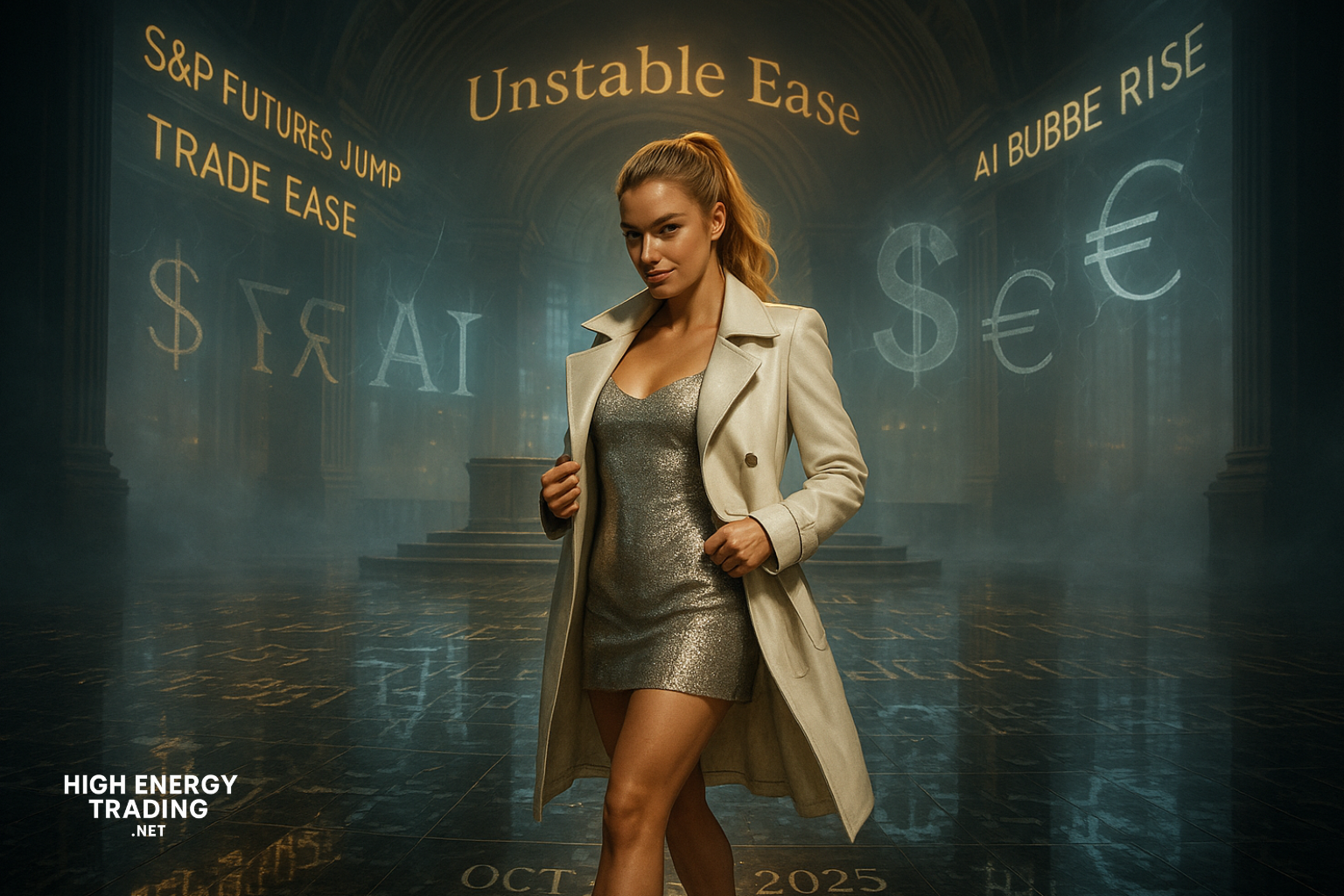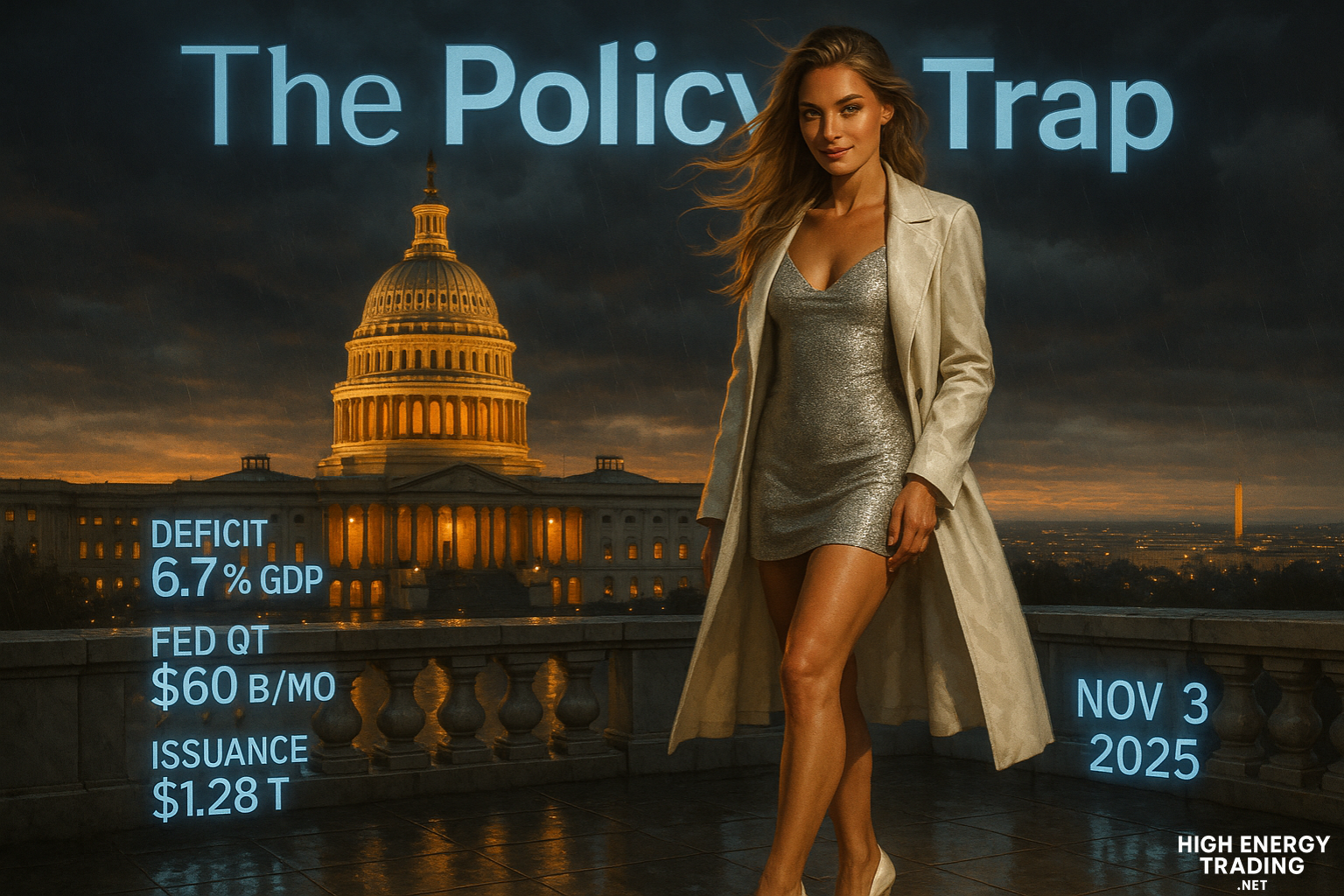Unstable Ease — Why the Calm after the Trade Storm Still Feels Wrong
Markets leapt higher this morning after signs of U.S.-China deescalation, leaving many surprised by how little fear remains. But when relief rallies dominate over conviction rallies, it’s often a signal that confidence is vulnerable, not durable.
What just reset
President Trump softened his rhetoric over rare earth export controls, and the market responded sharply — the S&P futures jumped, volatility receded, flows rotated back into equities.¹ That kind of reflex rally is often short lived. Markets are celebrating the absence of disaster, not the arrival of certainty.
The illusion of contained risk
Morgan Stanley is now warning that the S&P 500 could suffer an 11 percent drawdown if trade tensions don’t fully cool.² That call comes as concentration risk in the U.S. market is already elevated — a handful of mega-caps dominate returns. Meanwhile, the Bank of England and IMF have both flagged the risk of abrupt market corrections if sentiment around AI or central bank credibility turns sour.³
It is hard to argue with them. AI valuations have become part moonshot, part narrative. And the edges of that bubble are exposed whenever politics or central bank credibility are questioned. The BoE explicitly linked markets’ vulnerability to perceived threats to Fed independence.³
FX cracks are underappreciated
Less visible but equally risky is the overleveraged currency market. The IMF recently warned of underrecognized liquidity risk in the $9.6 trillion global FX market.⁴ Swap lines, cross-border funding, capital flows — all of it lives on sentiment. If traders blink in FX, contagion spreads well beyond equities.
The curve tells more than the hype
In the Treasury space, yields have been falling, especially at the short end, steepening parts of the curve.⁵ That reflects markets pricing in more Fed cuts. But it also reflects fear. When the terminal rate is accepted more as a ceiling than a floor, upside rate risk is underinsured.
A shock to watch
This isn’t a classic fundamental shock. The most dangerous derails will come from unexpected political interference in central banking, a surprise blowup in volatility, or a liquidity squeeze in FX or derivatives markets. One crack in the structure can cascade.
What to watch over the next 4–8 weeks
Flows into tech and AI: when allocations shift away from speculative growth toward reliable, cash-flowing names
Volatility structure: inversion or steepening in VIX term curves signals hedging stress
Cross-asset correlation: if equities, FX, credit, and rates begin ungluing from each other, regime change is underway
Central bank posture: any wavering on forward guidance or credibility will hit markets faster than inflation prints can react
We are not staring at a crash today. But the tectonic plates are simmering. And calm rallies often die hardest when they are the ones predicated on silence, not strength.
Markets have temporarily exhaled — don’t mistake that sigh for confidence.




